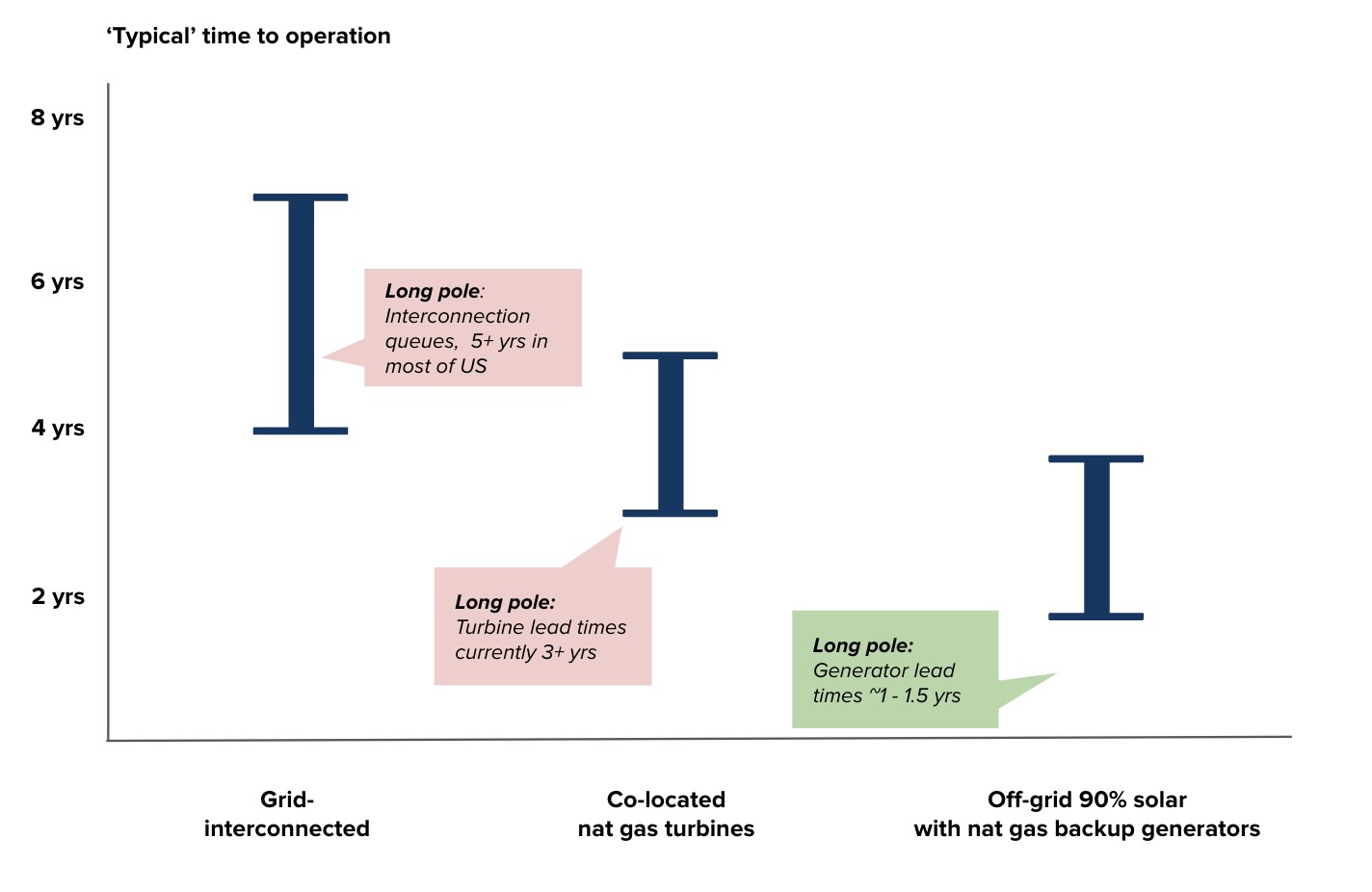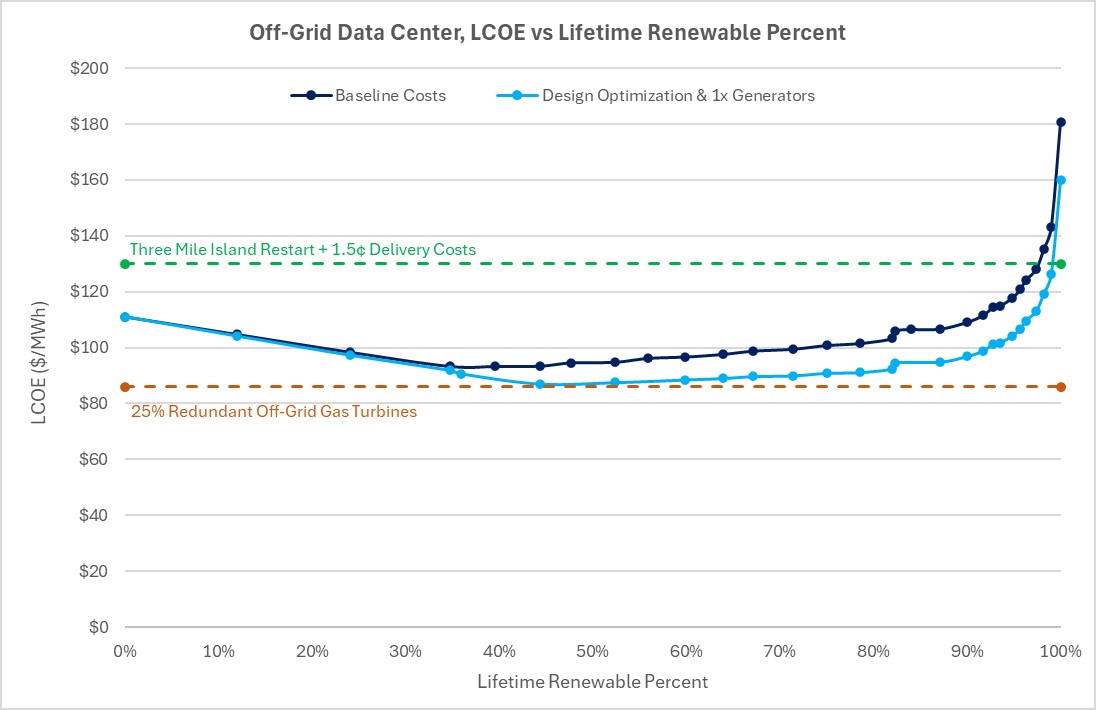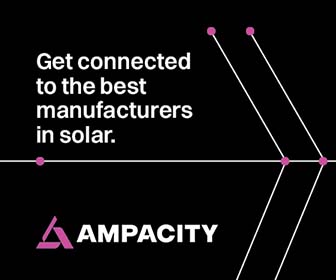Off-Grid Solution to the Hyperscalers Power Crunch
Artificial intelligence is creating unprecedented demand for power. Hyperscalers, companies building large AI systems, are expected to need between 30-300 gigawatts (GW) of power by 2030; the equivalent to powering up to 225 million homes. This massive energy requirement presents a critical challenge: how can we quickly and sustainably power AI growth?
Priorities and current limitations
As energy demand surges, the ideal solution would be fast, reliable, and cost-effective (under $100/MWh). But hyperscalers are facing a harsh reality: the available options are either too expensive, too slow, or simply unavailable.
The power grid is already stretched thin, with new connections taking over five years and costs skyrocketing 65 percent in the past decade. Some companies are scrambling for alternatives — renting generators at over $300/MWh or exploring decommissioned nuclear plants like Three Mile Island — but both are costly and in short supply.
Even traditional solutions come with challenges. New gas power plants? Timelines can stretch, especially if turbines aren’t readily available. Clean alternatives like nuclear or geothermal? Some see promise, but scaling quickly remains a hurdle. Hyperscalers need power now, yet every option faces its own complexities

A surprising solution: off-grid solar microgrids
An analysis found that off-grid solar microgrids (combining solar panels, batteries, and backup gas generators) could provide a faster, cleaner, and cost-competitive alternative to traditional power systems.
To assess feasibility, various configurations were modeled — evaluating energy mix, costs, deployment timelines, and geographic factors. The focus was on data centers with flexible reliability needs, making them well-suited for renewable integration.
The findings? Off-grid microgrids can scale quickly, reduce emissions, and meet growing energy demands, offering a viable path forward for hyperscalers.
Cost
Affordability remains a key factor in scaling power production, making the search for effective investment opportunities a top priority. After modeling thousands of potential configurations, three viable scenarios emerged, each designed to meet hyperscaler cost targets while seamlessly integrating renewable energy.
1. Speed
Traditional power infrastructure struggles to keep pace with the rapid expansion of AI-driven data centers. Grid connections can take five years or more, while new gas plants require at least three. Off-grid solar microgrids, however, offer a faster path to reliable power.
A well-planned project can move from concept to operation in as little as 12 to 18 months with streamlined approvals and parallel development. Smart design choices and bulk purchasing can reduce costs by up to 10%, making these systems even more competitive.
2. Scale
AI’s 30- to 300-gigawatt power demand requires strategic energy solutions. The capacity to meet this demand already exists in the U.S. Southwest, which holds over 1,200 GW of potential data center capacity, far exceeding projected needs through 2030. Yet, this potential remains largely untapped.
The Southwest offers distinct advantages for off-grid solar microgrids. West Texas, with 95 percent private land ownership, streamlines development by minimizing bureaucratic delays. Across the region, business-friendly permitting and strong financial incentives for landowners enable faster project approvals.
The region also benefits from over six hours of peak sunlight daily, making it an optimal location for solar-powered energy solutions. Additionally, access to key infrastructure—including gas pipelines, highways, and airports—supports efficient deployment and scalability.
3. Environmental impact
For hyperscalers, cost and reliability often take precedence over sustainability, but the environmental impact of their energy choices is impossible to ignore. A 90 percent solar-powered configuration could prevent up to 4.1 billion tons of CO₂ emissions by 2030, all at a mitigation cost of around $50 per ton, similar to what big tech companies already pay for carbon offsets. Even a 44 percent solar mix could cut emissions by more than a third while offering a strategic buffer against fuel price volatility.

Why isn't this happening yet?
The technology exists, the economics are competitive, and the environmental upside is undeniable. So why aren’t hyperscalers making this a top priority? The answer lies in outdated perceptions of cost, risk, and feasibility — barriers that, if challenged, could unlock a future where AI-driven power demand is met without compromising the planet.
- Cost perception vs. long-term value A 90 percent solar-powered system carries a $23/MWh cost premium over pure gas, which initially discourages investment. However, the implied cost per ton of avoided emissions remains around $50, well within the range major tech companies already pay for carbon mitigation. Additionally, a 44 percent renewable system is nearly at cost parity with gas-only alternatives while providing a hedge against fuel price volatility. The misconception that off-grid solar is prohibitively expensive prevents hyperscalers from embracing solutions that could prove more cost-effective in the long run.
- Old habits die hard Data centers built exclusively for AI training are a relatively new development, yet power sourcing strategies remain rooted in traditional approaches. Historically, data center designers have been skeptical of off-grid solutions due to a perceived need for “five-nines” reliability (meaning the power is available 99.999 percent of the time). But even traditional off-grid options, like gas turbines, or relying on a single nuclear plant like Three Mile Island, wouldn’t actually achieve that level of reliability without backup systems. This highlights the need for innovative approaches rather than rigid adherence to legacy power models.
- It’s hard to be first (and get funding) Large-scale off-grid solar microgrids have yet to be constructed at scale, making first-of-its-kind financing a hurdle. The uncertainty of uncharted territory often signals potential risks. However, these systems are technically feasible today and could scale rapidly with successful implementation, unlocking a new era of resilient, low-emission power solutions.
As more AI-dedicated data centers emerge, hyperscalers will need to reassess their energy strategies. Challenging outdated assumptions about cost, reliability, and feasibility is essential to fostering investment in off-grid solar microgrids — advancing both innovation and sustainability in power production.
Kyle Baranko is a Data Scientist and James McWalter is CEO at Paces.
Paces | www.paces.com
Duncan Campbell is a founding team member and Vice President of Project Development at Scale Microgrids.
Scale Microgrids | www.scalemicrogrids.com
Zeke Hausfather is the Climate Research Lead and Nan Ransohoff is Climate Lead at Stripe.
Stripe | stripe.com
Author: Kyle Baranko, Duncan Campbell, Zeke Hausfather, James McWalter, and Nan Ransohoff
Volume: 2025 July/August











.png?r=4596)
